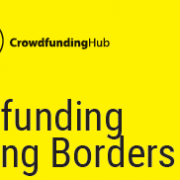Current State of Crowdfunding in Italy 2016
An overview

Inhabitants: 60,80 million
GDP (ppp) per capita: $35,665
(Source: Wikipedia; Image Credit: NuclearVacuum)
Crowdfunding established itself rather quickly in Italy, where Produzioni dal Basso the first donation and reward-based platform was launched in 2005. The growth of the crowdfunding market has been slow, but nevertheless relevant. Crowd-investment (lending and equity) started in the last two years. Lending is heavily regulated and still intermediated by the platforms (lenders may not choose borrowers).
Volumes
Crowdfunding in Italia Report estimates donation based crowdfunding with a total of €4.986.444, surpoassed by reward based crowdfunding with a total of €7.104.340.*
In smaller amounts, P2P consumer lending: was calculated to €3.054.324, whereas P2P business lending, authorized only last summer has not been measured yet.
The Italian Accosiation of Equity Crowdfunding estimates a total of €3.433.986 raised.
* Source: Crowdfunding in Italia – Report 2015, Crowdfunding
**Source: Associazione Italiana Equity Crowdfunding
Local platforms
ProduzionidalBasso.com (donation and reward) was founded in 2005. It is one of the first platforms founded in Europe.
DeRev.com (donation and reward) is the main Italian crowdfunding platform. It was founded in 2013.
Starteed.com (mixed model) was launched in 2012 as a platform combining donations, rewards and equity.
Rete del Dono (2011) is a donation based platform for collecting online donations to non-profit organization in particular
Foreign platforms
Eppela is a donation and reward based platform. It was founded in 2011.
The UK equity platforms, Seedrs and Crowdcube, both have visibility in Italy.
Kapipal.com is a European platform with presence in Italy however, Kickstarter and Indiegogo are the most important ones when it comes to donations and rewards.
Regulations
Donation and reward-based crowdfunding are not regulated. Platforms don’t need to be licensed and are free to agree terms and conditions with campaign owners and crowdfunders. Donations for certain kinds of charity enjoy tax advantages.
Lending-based crowdfunding is heavily regulated and platforms ought to have a licence from the Bank of Italy, which is the banking regulator. Lenders cannot directly choose borrowers.
Equity crowdfunding is regulated by law and by CONSOB, which is the securities and exchange regulator and it limited to funding certain kinds of companies only.
Crowdfunding platforms operating in equity need to be licenced and are considered financial intermediaries and thus are monitored by the CONSOB authority. The maximum amount raised cannot exceed €5 million per year. There is no maximum number of shareholders or investors.
Individual investments must be concluded either by the platforms or by broker-dealers, in full compliance with anti-laundering laws and the E.U. Markets in Financial Instruments Directive (MiFID). This dictates that platforms must ask the potential client to provide information regarding his/her knowledge and experience in the investment field relevant to the specific type of product or service, and check if the investment profile matches the proclivity to risk investments, eventually warning the client in case of mismatch. But there will be an exemption for small investments:
- For individuals: €500 per deal and €1000 annually;
- For companies €5.000 per deal and €10.000 annually
Banks
Banks are watching carefully at the evolution of the market; some banks are starting to understand that alternative finance might help their scoring system and select companies who deserve credit, as validated by the crowd.
As far as the deal flow is concerned, Italy has a great potential: there are many companies developing innovation in far different industries, or offering great products. Most of them don’t find investments from professional investors and don’t succeed in getting loans from the banks system.
Equity platforms have not invested much in communication, and there is still poor awareness on this financial tool.
Larger operators are expected to join the market, now that regulation makes operations more affordable.
Our expert

The crowd is increasingly participating to innovation providing ideas, technology and resources. Only businesses which learn riding this huge wave will win the game
The Current State of Crowdfunding in Italy is made possible by the contribution of Alessandro Lerro
What is the potential of crowdfunding in your country?
Donation and reward-based platforms are being now used as communications tools; large tel-co operators are starting to sponsor platforms, to get a visibility return.
Crowd-investment (lending and equity) started in the last two years. Lending is heavily regulated and still intermediated by the platforms (lenders may not choose borrowers).
Equity crowdfunding has been allowed by the first regulation enacted in the world in 2012: unfortunately legislators used an upside-down approach, that didn’t help the market to grow properly, while abroad bottom-up approaches left more room to the market to shape itself.
New regulations have been issued in spring 2015 and winter 2016, aiming to sustain the needs of platforms, campaign owners and investors. Nevertheless, the Italian first year is comparable to that of other countries in terms of deal size and numbers and volumes.
What is the biggest challenge?
People are not used to invest in other people’s business. This is true not only for retail investors, but also for professional investments (in average below €100.000 per year). Indeed, crowdfunding in Italy started with the cultural industry: to date the largest volume is donated to projects involving books, exhibitions and movies.
The lack of traditional source of finance (bank loans) is slowly driving the attention to alternative finance and crowd-investment.
What is the future holding for Italy?
The whole market is growing. A report form Università Cattolica del Sacro Cuore, Milano, mentions:
- Number of platforms: + 68%
- Projects received: + 108%
- Campaigns: + 67%
- Total volume of funding: + 85%
The success rate decreases, from 37% to 30%, but this might be explained with several reasons, including more competition among campaigns.
Lending crowdfunding is expected to grow quickly as two new platforms have just been licensed and more players seem willing to enter in the market.
Equity crowdfunding is expected to take off, as two main bugs have just been fixed by the legislator and the regulator: the kind of companies who can use crowdfunding to raise finance has been enlarged and platforms can directly run the test whether the investment envisaged is appropriate for the client, without bringing the client off-line at a broker dealer.









